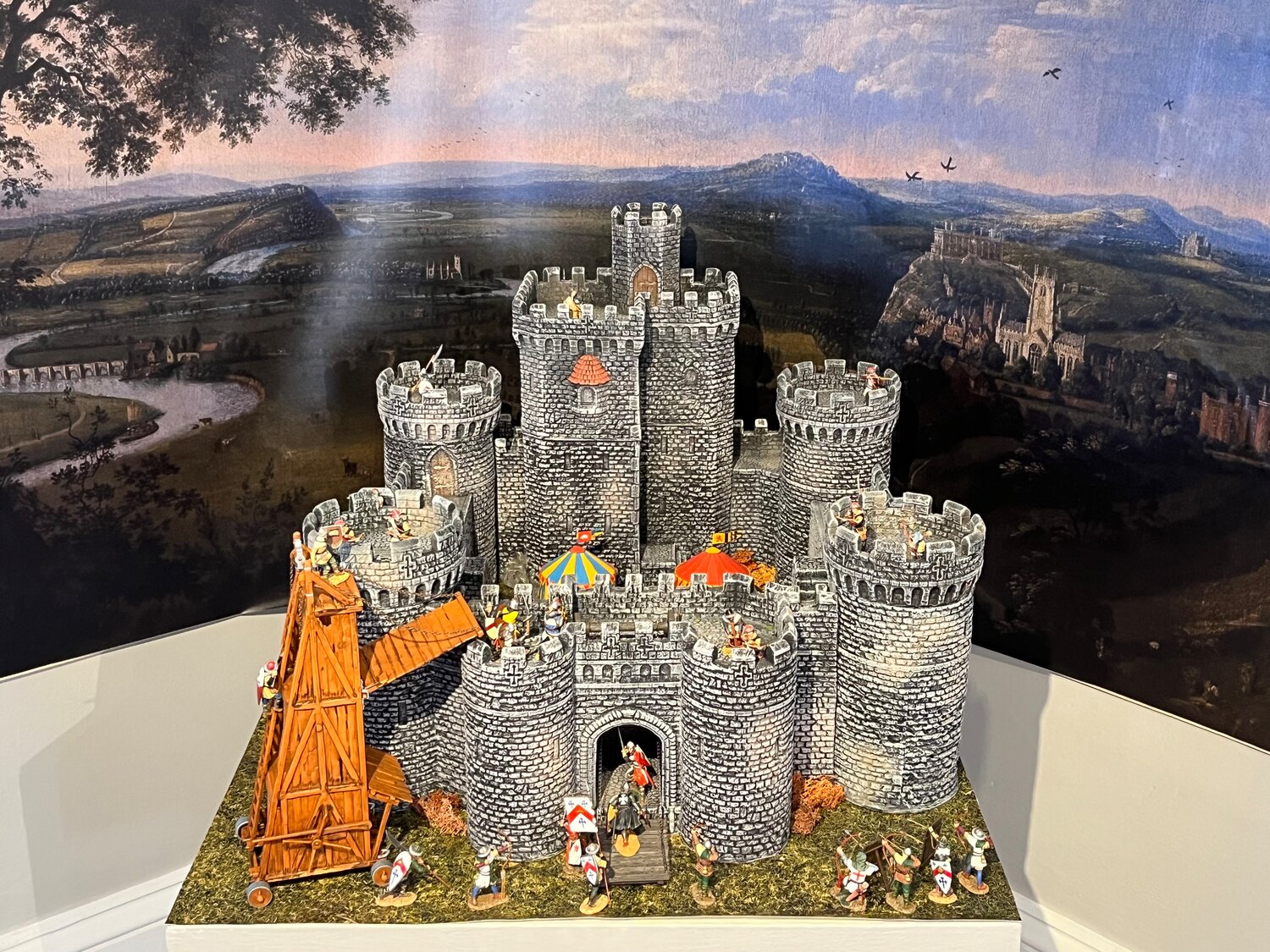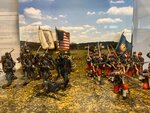Raynham showcases history on a small scale
A new exhibition has opened at Raynham Hall Museum, featuring miniatures from a number of historical epochs and continents. Entitled “History in Miniature,” the exhibit offers visitors a different way to view history, capturing moments and ways of life from across the expanse of human history.
The presentation was organized by Richard Schuster, treasurer of the nonprofit Friends of Raynham Hall. Schuster, an avid miniature collector since he was a child in Queens, explained that as a lifelong lover of history, he has always been fascinated by the idea of recreating scenes and battles in miniature.
“I took an interest in history at a young age — not that I was a prodigy or anything, but we didn’t have computers and cellphones and video games, so instead I was a pretty avid reader,” Schuster recalled. “My friends would kid around with me, saying things like ‘You mean you play with toy soldiers?’ But I was undaunted.”
Schuster has kept up his collection of miniatures throughout his life, and after visiting Raynham Hall six or so years ago and taking a tour, he was approached by the museum’s executive director, Harriet Clark, about creating a miniature replica of the Battle of Long Island, for which he donated all of the models as well. Also known as the Battle of Brooklyn, it was the largest battle, based on the number of troops, of the American Revolution, and the Continental Army’s defeat left Long Island and New York City in British hands for the rest of the war.
Schuster also designed the museum’s miniature replica of the British fort that occupied Oyster Bay during the war, constructed by John Graves Simcoe, a British officer most recently a focus of the historical television series “Turn.” Both displays have become a central part of the museum’s Education Center, and frequently draw the attention of children and history fans.
Several months ago, Clark and Schuster worked together again to create a new exhibition, this one focused not on one specific period or aspect of history, but rather a kaleidoscope of epochs and events. Clark explained that part of the reason why they chose to create the “History in Miniature” exhibition was that it would present visitors with a different medium through which to learn history.
“For example you can see the drawings of the fort (in Oyster Bay) that Simcoe made all those years ago, but it’s a two-dimensional thing,” Clark said. “Without a diorama, it’s really hard for people to imagine there was a fort where there are a lot of buildings now. Not everybody can imagine what it would have been like, so I think it’s a lot of fun to be able to do that.”
The exhibition, which currently has no end date but will likely be on view for the next six months, according to Clark, features a wide variety of historical figures and time periods. Ancient Egyptian pharaohs can be seen standing next to the Nile River, while a fully replicated miniature castle takes up a corner of its own.
The more modern historical figures and artifacts range from Gen. George Washington, accompanied by his enslaved valet, William Lee, to Napoleon Bonaparte and the soldiers of his Grand Armée, and even to models of World War I-era fighter planes. Schuster said that the dioramas offer a unique, and in some ways more visceral, way to look at history.
“To me, it’s a way to visualize history and to teach history,” he said. “And if I can reach young people by virtue of them thinking, ‘Wow, that’s really cool, I’d like to find out more, to read up on it’ then that’s my main goal.”
The exhibition is on display in Raynham Hall Museum, primarily on the second floor in the exhibition room, although parts of it are on the first floor as well, by the living rooms. The museum is open from 1 to 5 p.m. Tuesday through Sunday, and anyone interested in booking a tour can do so at RaynhamHallMuseum.org, or call (516) 922-6808.









